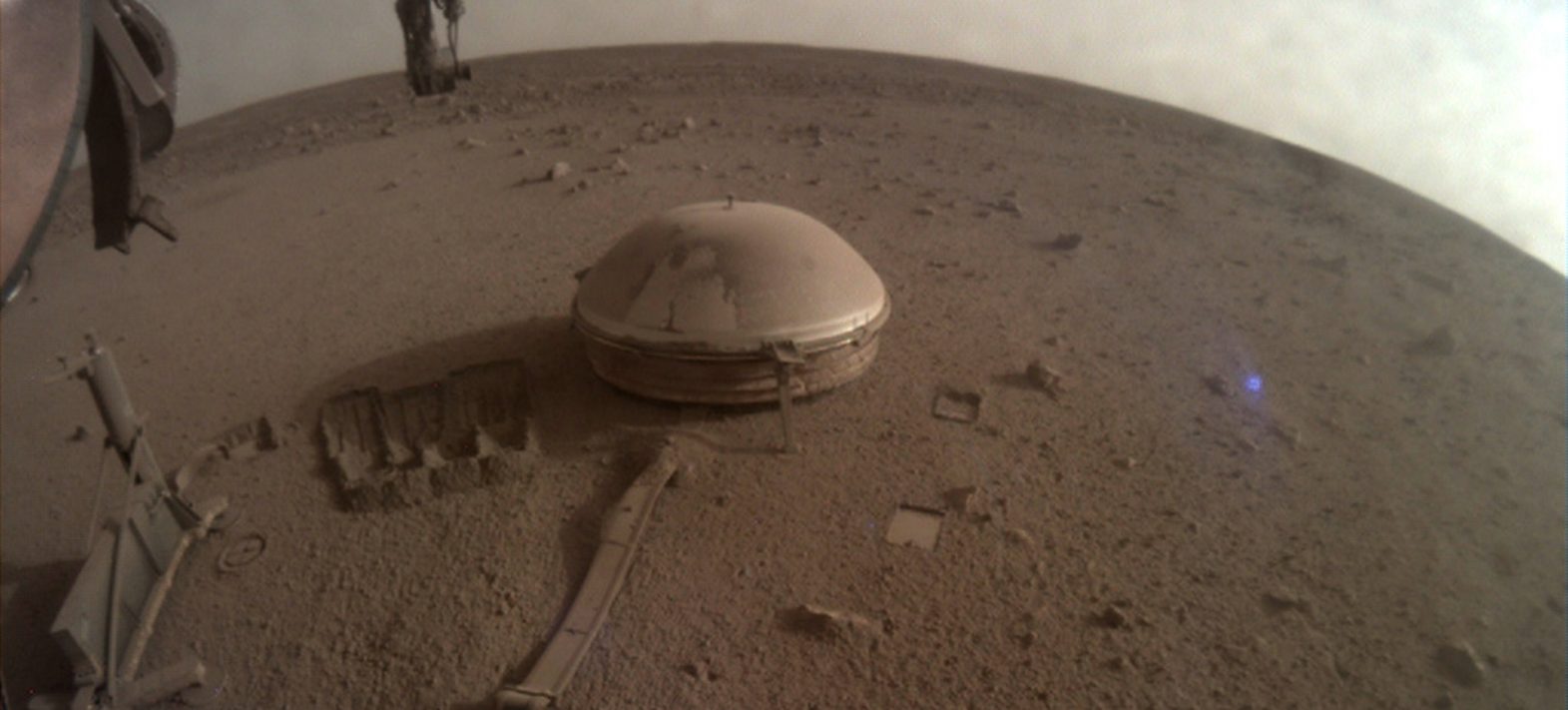After four years of activity, the InSight mission comes to an end
NASA's InSight mission, with the French SEIS instrument on board, has ended after more than four years of collecting unique scientific data on Mars. JPL teams have been unable to contact the lander after two consecutive attempts, leading them to conclude that the spacecraft's solar batteries are running out of power.

InSight’s goal was to probe the interior of Mars. The data collected by the lander and its instruments have provided details about the Red Planet’s interior layers, the surprisingly variable remnants of its largely extinct magnetic field beneath the surface, the weather in this region of Mars, and seismic activity. The SEIS instrument has fulfilled its mission by revolutionizing our knowledge of Mars through the 1,318 earthquakes it has detected in the last four years. Its level of performance and reliability has been absolutely remarkable, as well as the involvement and commitment of the French teams from CNES and CNRS, in full collaboration with the NASA teams. The operational teams have doubled the lifetime of the mission, and have been rewarded by the detection by SEIS during the extended mission of the largest Martian earthquake ever detected (the Big One of magnitude 4.7) and of major meteorite impacts never seen before in the modern history of terrestrial planets. The seismometer is the last science instrument that has remained on as dust collecting on the lander’s solar panels has gradually reduced its energy, a process begun before NASA decided to extend the mission earlier this year.
“I witnessed the launch and landing of this mission. While saying goodbye to a spacecraft is always sad, the fascinating science that InSight conducted should be celebrated today,” said Thomas Zurbuchen, associate administrator for NASA’s Science Mission Directorate. “The seismic data alone from this Discovery program mission offers extraordinary insights not only into Mars, but also into other rocky bodies, including Earth.”
“With InSight, seismology has been at the center of an extraterrestrial mission for the first time since the Apollo missions, when astronauts brought seismometers to the Moon,” said Philippe Lognonné of the Institut de Physique du Globe de Paris (IPGP) and professor at Université Paris Cité, the French lead scientist for InSight’s SEIS seismometer. “We broke new ground and our science and engineering team can be proud of everything we learned along the way.”
Primarily intended to place scientific instruments on the Martian surface, the arm and its small shovel also removed dust from InSight’s solar arrays when the power began to wane. Counterintuitively, mission teams determined that they could sprinkle the dust from the shovel onto the panels on windy days, allowing the falling pellets to gently sweep dust off the panels.
“Just landing on Mars is an accomplishment, and InSight has achieved much more than that,” said Laurie Leshin, director of JPL, which manages the mission. “As a Mars scientist, I found the data set delivered by InSight exhilarating.”
“The success of the InSight mission and the incredible quality of the data provided by SEIS perfectly illustrate French know-how in Mars science. This expertise is recognized worldwide and allows everyone to learn more about the Red Planet and, consequently, about our planet Earth,” said Philippe Baptiste, president and CEO of CNES.
“We have considered InSight our friend and colleague on Mars for the past four years. So it’s hard to say goodbye to him even though he has earned his retirement,” said Bruce Banerdt of JPL, the mission’s chief scientist.
> See the NASA press release
> About InSight and SEIS
JPL manages the InSight mission on behalf of NASA’s Science Mission Directorate. InSight is part of NASA’s Discovery program, managed by the Marshall Space Flight Center (MSFC), a NASA facility in Huntsville, Alabama. Lockheed Martin Space in Denver built the InSight probe, including its cruise stage and lander, and supports spacecraft operations for the mission. CNES is the prime contractor for SEIS, and the Paris Institute of Globe Physics (Université Paris Cité/IPGP/CNRS) has scientific responsibility. CNES finances the French contributions, coordinates the international consortium (*) and has been responsible for the integration, testing and delivery of the complete instrument to NASA. IPGP designed the VBB (Very Broad Band) sensors, tested them before their delivery to CNES and, as part of the InSight National Observing Service, contributes to their operation and distributes the data to the scientific community. CNES has developed and operates the FOCSE-SISMOC, the mission center for the SEIS and APSS instruments. Several CNRS laboratories including LMD (CNRS/ENS Paris/Ecole polytechnique/Sorbonne University), LPG (CNRS/University of Nantes/University of Angers), IRAP (CNRS/University of Toulouse/CNES), LGL-TPE (CNRS/Ecole Normale Supérieure de Lyon/Université Claude Bernard Lyon 1), IMPMC (Sorbonne University/Museum national d’Histoire naturelle/CNRS) and LAGRANGE (CNRS/Université Côte d’Azur/Observatoire de la Côte d’Azur) are participating with IPGP and ISAE-SUPAERO in the analyses of the InSight mission data. These analyses are supported by the CNES and the ANR.
(*) in collaboration with SODERN for the realization of the VBB, JPL, the Swiss Federal Institute of Technology Zurich (ETHZ, Switzerland), the Max Planck Institute for Solar System Research (MPS, Göttingen, Germany), the Imperial College London and the University of Oxford have provided the SEIS subsystems and participate in the scientific exploitation of SEIS







